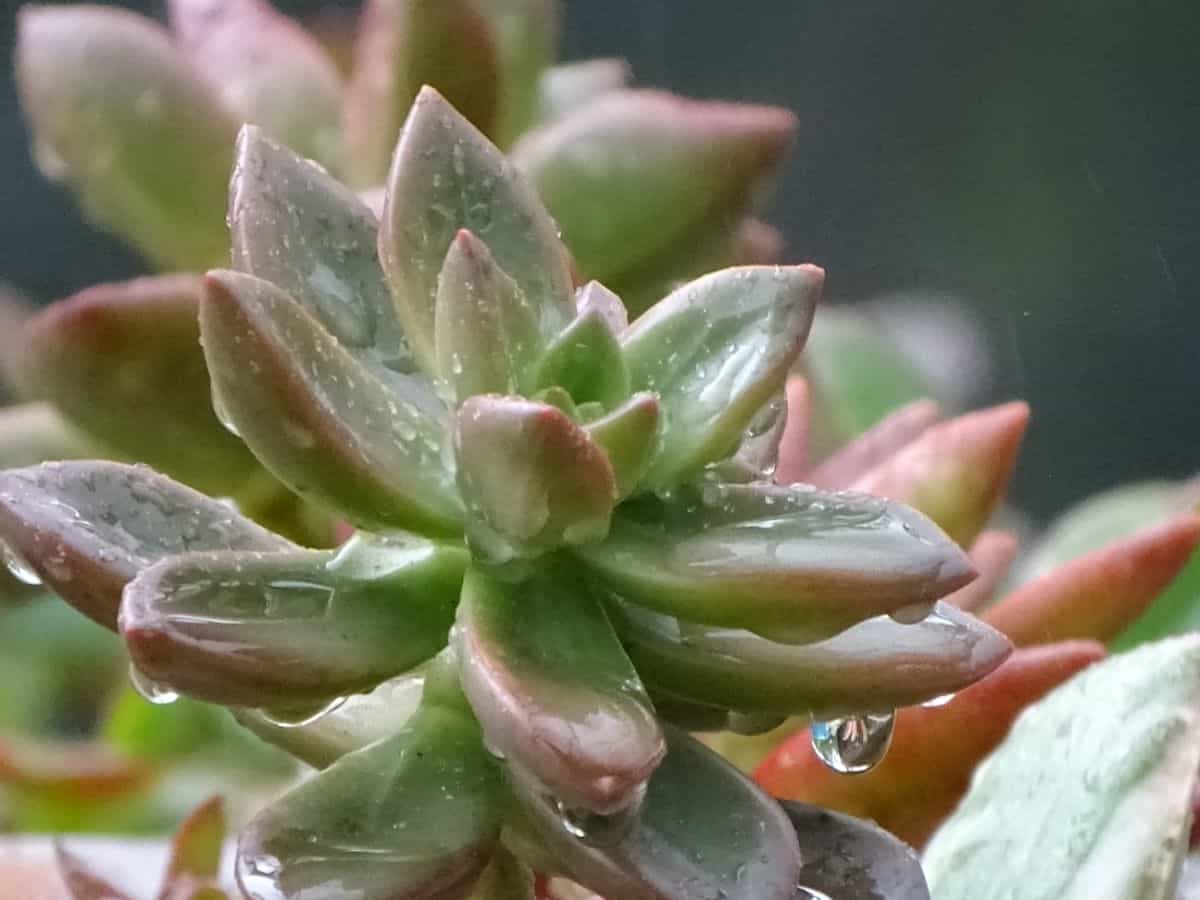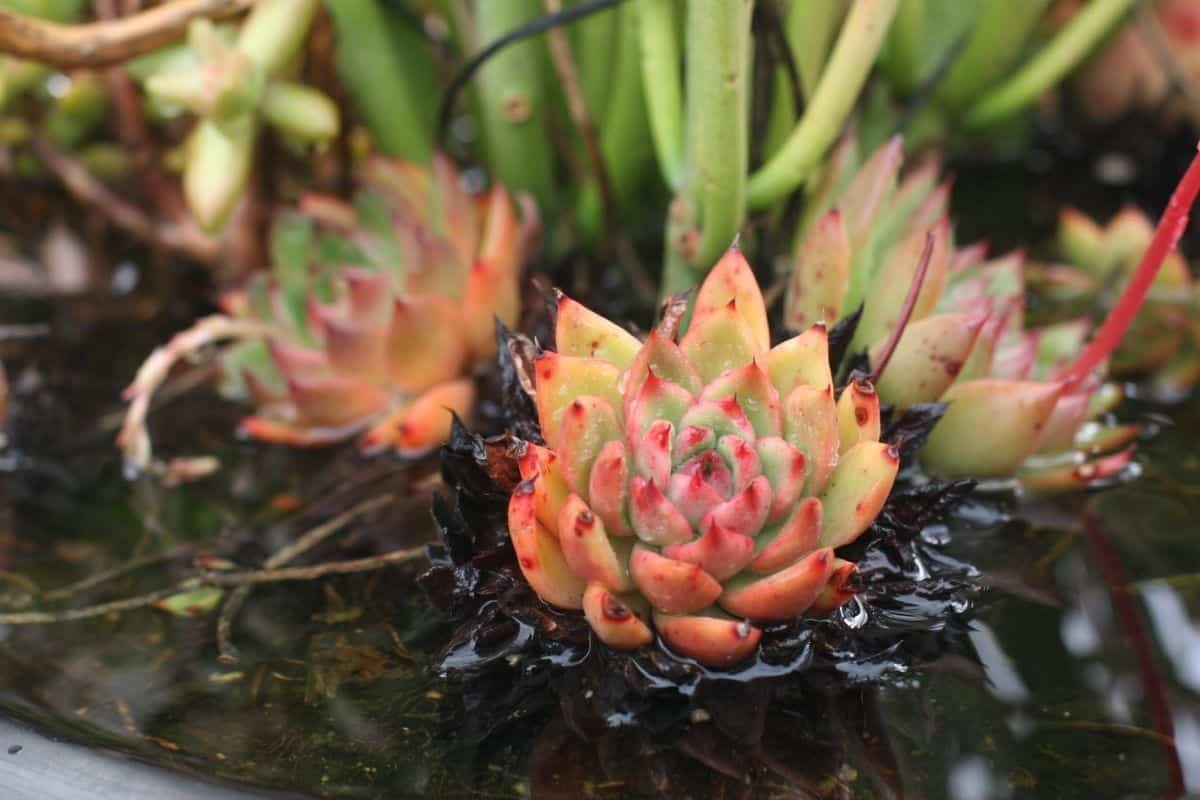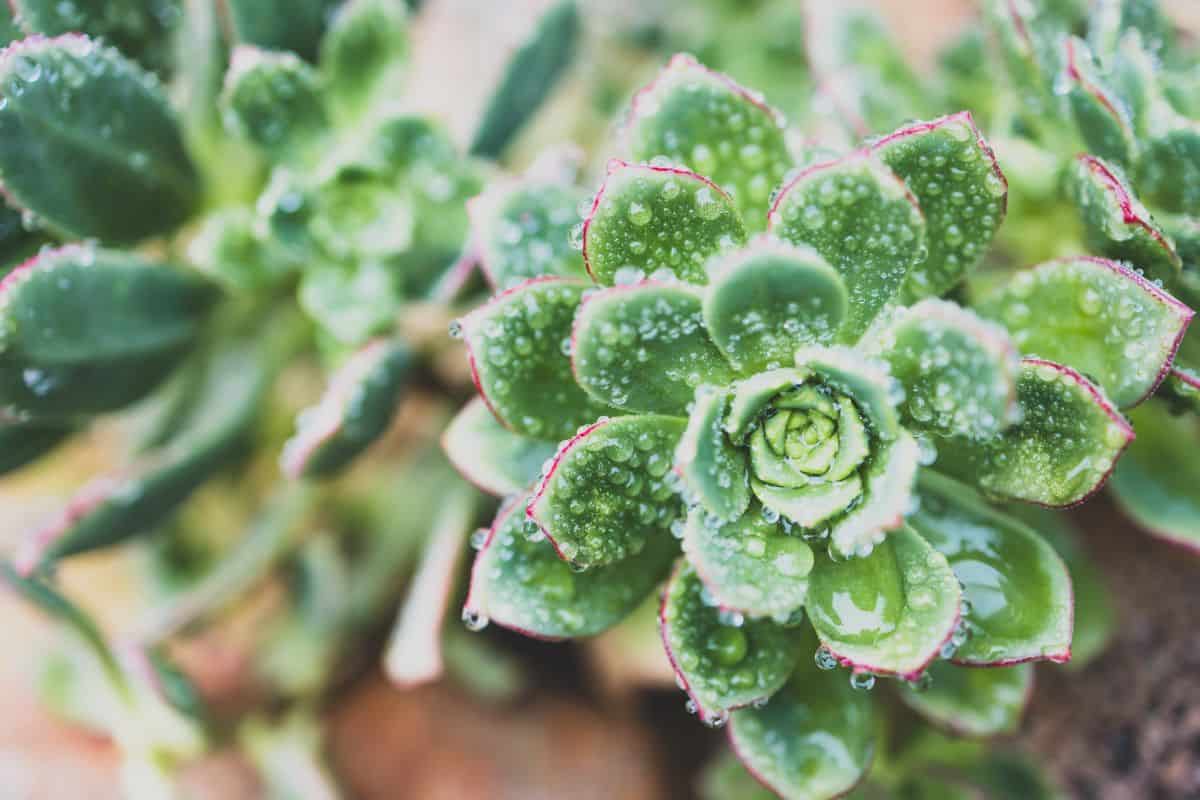If your drought-loving succulents and cacti have been left out in the rain, you may be panicking. Thoughts of root rot may be dancing your head since excess moisture is a succulent’s worst enemy. Well, don’t panic just yet. Rainwater can actually be quite healthy for succulents, even in large amounts. There are also a few factors, such as drainage and temperature, to consider before you start worrying about your precious plants.
Benefits of Rainwater

A little rain won’t harm healthy succulents and cacti. In fact, even a lot of rain can be beneficial to your garden. As a general rule, succulents prefer infrequent but deep water. A heavy rain might be just what your plants need to look perky and vibrant after a dry or hot spell.
Rainwater delivers moisture to your plants as nature intended. Unlike tap water, rainwater doesn’t contain any additives such as chlorine or fluoride. These additives are intended to make the water safe for human consumption, but they aren’t ideal for plants.
If you live in an area with ‘hard’ water, the water from your garden hose may contain a variety of minerals that can have an impact on the pH of your soil. Likewise, softened water can contain a higher level of salt than most plants would prefer.
In addition to its lack of minerals and additives, rainwater provides your succulents with a cleansing shower. The rain will wash the dirt and dust from your plant’s leaves, allowing the leaves better access to sunlight.
It should be noted that unless you live in an area where tap water is unsafe for drinking, it’s unlikely that any of these additives or minerals will harm your plants. However, many gardeners choose to collect rainwater to nourish their plants at a later time. This way their plants can receive the benefits of rainwater even during droughts or dry spells.
https://www.instagram.com/p/BzCXuLaFBtm/?utm_source=ig_web_button_share_sheet
Soil and Drainage

The biggest impact on whether or not your succulents will survive a heavy rain is the type of soil you’ve planted them in. Typically, succulents prefer course well-draining soil. If the soil holds too much moisture for too long, the plant’s roots will likely rot. If you’ve planted your succulents in the right type of soil, you should have little to worry about.
No products found.
If your succulents are part of your landscaping or outdoor garden, you may want to consider planting them in a way that encourages drainage. Some gardeners have found success in planting their succulents on a slight slope or berm. Particularly heavy rains may wash away or erode parts of your garden, but for the occasional shower this can help your succulents dry out faster.
If your succulents are planted in containers, you can always move them if you’re worried about standing water. Puddles put your plants at risk of root rot, so it may be best to avoid leaving your pots on the ground. Consider placing your pots on an elevated surface such as a potting table or shelf.
Temperature

Although some succulents can survive frigid temperatures, others can be quite sensitive to the cold. If your plants have been rained on and an overnight frost is expected, you may need to cover them or bring them inside. If the temperature is expected to stay above freezing, you should have nothing to worry about.
For delicate succulents, a frost after a heavy rain can be deadly. At freezing temperatures, the water inside the plant can freeze and expand, damaging the plant’s cell walls. Ice on the outside of the plant can cause further irreparable damage.
If you’re reading this article after a rainy day and frosty night, you may be concerned about the future of your plants. Depending on the temperature and the exact amount of moisture, your succulents may be able to survive a post-rain frost. If the leaves or certain sections of the plant are damaged, don’t throw the plant out just yet. As the plant grows, the damaged leaves or sections will eventually be replaced by healthy growth.
Preparing for Rain
While succulents typically prefer climates with limited rainfall, it is possible to grow them in more rainy environments, as long as you properly prepare them. Keeping a close eye on the weather forecast can help you make the right decisions for your garden before the rain starts.
Succulents planted in containers are the easiest to prepare for inclement weather. You can simply move them indoors or to a covered area where they can avoid most of the storm. If you would prefer your plants receive a little rainwater, you can always move them after you think they’ve had enough.
Outdoor succulent gardens are a little more difficult to protect from the rain. You may not be able to keep your plants completely dry, but you’ll be able to shield them from a lot of the moisture by covering them with a tarp or piece of plastic. It’s likely that they’ll be able to absorb moisture from the soil around them, but hopefully the tarp will cause the rain to pool far enough away to prevent root rot.

After the Rain
Although it’s generally recommended to plant succulents in containers with drainage holes, many gardeners can’t resist planting their beloved succulents in adorable or interesting containers without adequate drainage.
If you have plants in containers without drainage holes, you may consider trying to pour out excess water if possible. Tipping the container as much as you can without the plant falling out will help dry out the soil more quickly. You might also want to consider adding drainage holes to your pot, if possible, to protect the plant from future rainstorms.
Pots sitting on top of saucers may also find it difficult to dry out after a heavy rain, so you’ll need to empty the saucer of standing water. You may also want to set the saucer aside for a few days, giving the pot a chance to dry out before putting it back in place.
If you’re worried about your plants drying out after a rainstorm, or they’re planted with less-than-ideal drainage, try placing the containers in a particularly sunny area. Allowing the plants as much sun as possible, without risking burning the leaves, will help evaporate the water more quickly.
As long as you’ve done your homework on basic succulent care and have planted your succulents and cacti in well-draining soil and protected them from freezing temperatures, it’s unlikely that your plants will suffer any long-term damage from being left in the rain. So, just relax and enjoy the rainy weather. Your plants will certainly appreciate the nourishing rainwater!


Sunita Magus
I am always looking for ways to improve the care I offer my succulents.
Josette Porcena
My succulent are dying on me